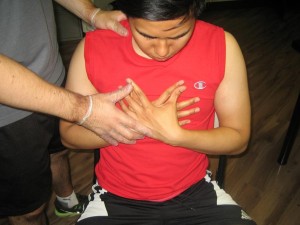Bronchiectasis involves blockage of the airways due to the formation of mucus. The condition arises if the body could not eliminate the mucus which accumulates in the airways. The gradual buildup of the mucus results to infection that widens the airways.
The condition usually starts in childhood even though the symptoms might be observed later. It might also be due to a birth defect such as cystic fibrosis. In some cases, it also forms due to other health conditions such as influenza or pneumonia.
What are the causes?

Bronchiectasis is typically triggered by a form of injury in the airways. The damage might be a form of lung infection such as pertussis, pneumonia or tuberculosis. The condition is also due to the ingestion of objects such as a coin or toy.
What are the indications?
- Shortness of breath
- Coughing
- Chest pain
- Abnormal chest sounds
- Production of excess mucus
- Clubbing
Management
There is no precise treatment for bronchiectasis but proper management will allow an individual to continue with a normal lifestyle. Some of the commonly used treatment options include:
- Antibiotics for infections
- Bronchodilators to open the blocked airways
- Expectorants to allow easier elimination of the mucus
- Physical therapy to promote clearing of the mucus
- Oxygen therapy might be started in severe cases
It is important to note that bronchiectasis causes the airways to end up blocked and lose their capability to clear up the mucus which leads to the accumulation of mucus. This leads to frequent lung infections.
Due to the steady buildup of mucus, the airways weaken and scarred and lose their ability to function properly. As an outcome, other vital organs in the body receive less oxygenated air and starts to malfunction. This can lead to the development of other serious conditions such as heart failure, respiratory failure or a collapsed lung.
